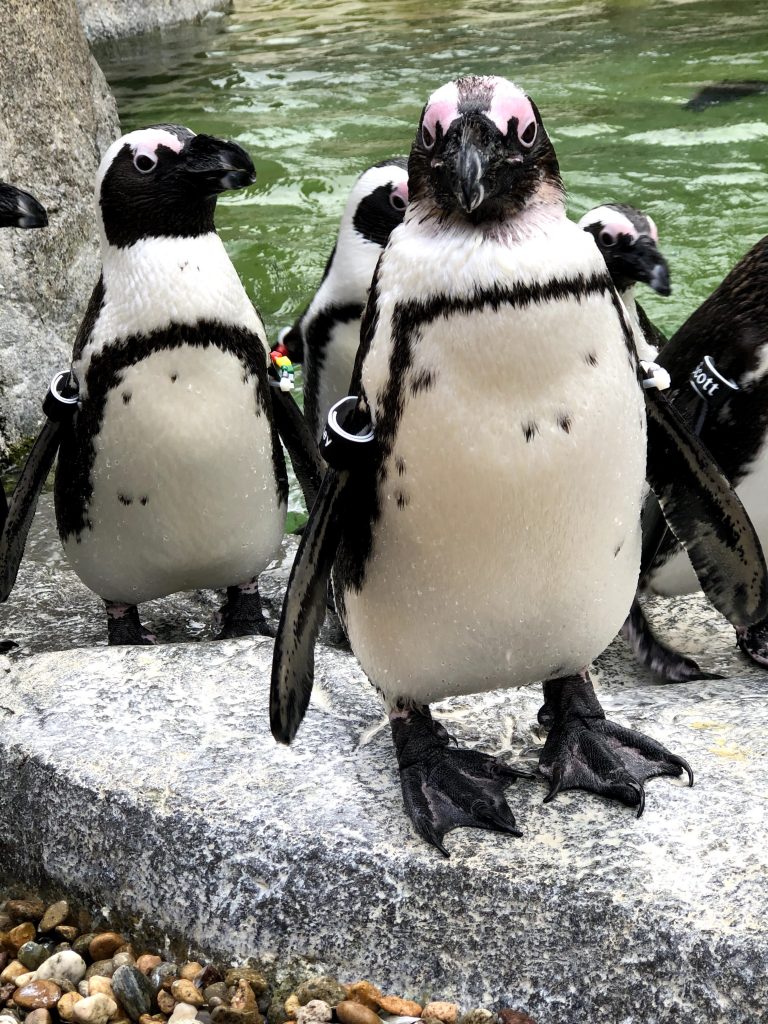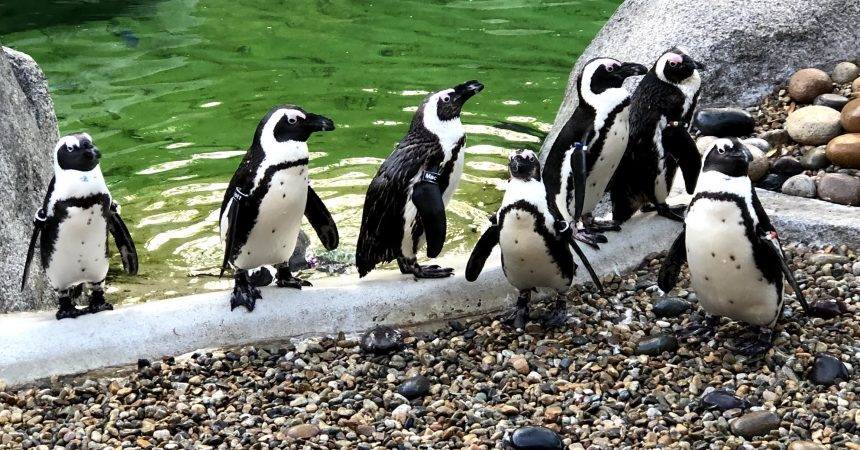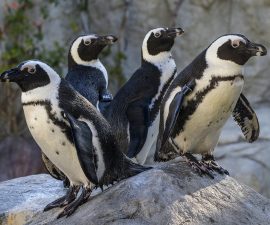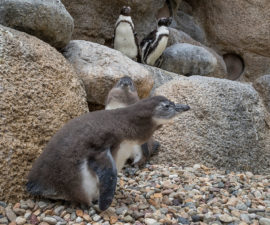It’s impossible not to smile when you round the corner into Cape Fynbos at the San Diego Zoo’s Conrad Prebys Africa Rocks. Here, the residents waddle gingerly across the beach, always looking dapper in their feathered tuxedoes. Coming in at around two feet tall, weighing up to eight pounds, and braying like a donkey, the pint-sized African penguin is the very definition of charming.
And Debbie Denton knows something about penguin charm: her fascination with penguins began when she was a little girl, dreaming of one day becoming a penguin care specialist. Debbie has now worked with penguins for 28 years, and she continues to fulfill her dream every day in her current role as senior wildlife care specialist at the San Diego Zoo.
In honor of World Penguin Day, Debbie shows us what it’s like to walk in her shoes—or rather, rubber boots—for a day in the life of a penguin care specialist.

A day in penguin care
While most of San Diego is still sleeping, Debbie is ready to start her day at Cape Fynbos, home of the Dan and Vi McKinney Penguin Habitat. She arrives at 6 a.m. and does the first visual health check of the day, making sure that all 37 penguins are looking and acting as healthy penguins should.
Meal preparation begins at 6:30 a.m. Debbie prepares 30 pounds of fish (a mixture of herring and capelin) by rinsing off excess scales and inspecting each fish for quality before dividing the daily fare into morning and afternoon servings. For an extra boost of nutrition, each penguin will also receive a specially formulated vitamin pill.

But before the feeding can start, the habitat gets a scrub-down. At 7:15 a.m., Debbie dons her “yellows”—a set of bright yellow rubber overalls and jacket—and spends the next hour cleaning up the beach. The habitat’s boulder walls, pebbled shore, and saltwater pool mimic the warm beaches of South Africa, where these penguins can be found living in communal colonies. And though communal living comes with a bunch of benefits, it also gets inevitably messy.
For step one in beach cleanup, Debbie uses an industrial vacuum to sweep up loose feathers. She then brings out a power washer and sprays off the boulders. Next, she wrangles a large hose and flushes the pebbles on the ground. Her last step is to wash and shine the glass viewing pane.
At 8:30 a.m., Debbie is ready for the morning feed. She hand-feeds the birds, which gives her the opportunity to see each penguin up close as she does her second health check of the day, and also allows her to keep track of how much each bird eats. How does Debbie know who’s who? There are three ways to identify the penguins: by the pattern of black flecks on their belly, as unique to every penguin as a thumbprint; by a written name band on one flipper (on the right for males, on the left for females); and by a band of colored blocks on the other flipper (there are nine possible colors of blocks, and every penguin is assigned a unique combination of four blocks. If you feel like you’re suddenly trapped in a math problem, consider this: Debbie knows each penguin’s combination by heart!).

In the hours between the morning feed and the 3 p.m. feed, Debbie does behavioral observations. She uses this time to make notes about what every penguin is doing—such as how much time is spent swimming, socializing, grooming, and resting—which creates a daily record for all care specialists and veterinary staff to keep track of trends in behavior and health.
Finally, the end of the day means it’s time for the bubble machine. Bubbles provide an enriching experience for penguins, as going after the bubbles encourages the birds to practice the chasing and catching skills they use in their native habitat. A selection of other enriching experiences is also regularly mixed in, so as to keep the routine of activities exciting for the penguins.
In Debbie’s world, every day is World Penguin Day, and a day spent with her reminds us that taking care of these tiny birds is no small feat. The expertise of our wildlife care specialists is a central part of San Diego Zoo Wildlife Alliance’s mission to save species worldwide.
Our work to care for and protect penguins extends beyond San Diego. African penguins are endangered, and their populations continue to shrink as habitat loss, oil spills, and overfishing threaten their survival. To inform effective conservation strategies, our team is coupling the behavioral observations from the Zoo’s penguins with studies of penguin behavior in South Africa. San Diego Zoo Wildlife Alliance also partners with allies in South Africa to rescue, rehabilitate, and safeguard penguins and their environment.
When you visit Cape Fynbos at the San Diego Zoo, you are supporting penguin conservation worldwide. Your local support makes a difference in global conservation. Click here to learn more about African penguins, and check out our penguin live cam to connect with our colony from home.





